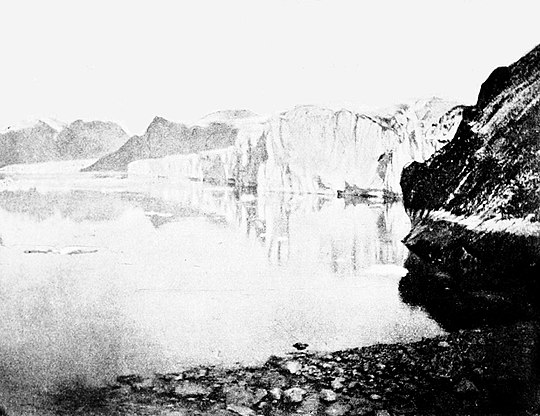the expanse. For full two hours we steamed abreast of the great Frederickshaab glacier (latitude 62°) and along the northeast contours of Melville Bay the eye failed to detect a break in the continuity of the ice wall for seemingly thirty miles or more. Where the eye follows a line of coast for any distance it is almost

Melville Glacier.
sure to compass all the types of glaciers which belong to the land: the broad and lazy glacial plain, flattened out like a vast and continuous ice slide; the sharply pitched hanging glaciers, which, caterpillar-like, crawl down the steeper slopes at angles of twenty-five to thirty-five degrees; and the deeply fissured crevasse glaciers, whose forbidding aspect only too vividly recalls the wicked ice sheets of the Alps. These types are, however, but the expression of a common structure, modified by local conditions, and set into the particular mold which belongs to each particular region. To assume, as perhaps the greater number of geologists do, that the Greenland glaciers represent, both in their construction and workings, a distinct or individual type, is to do violence to truth.
In the many hours of silent contemplation of these vast ice sheets I often pondered the question of the possible thickness of the ice which was involved in their making. Agassiz's measure-
